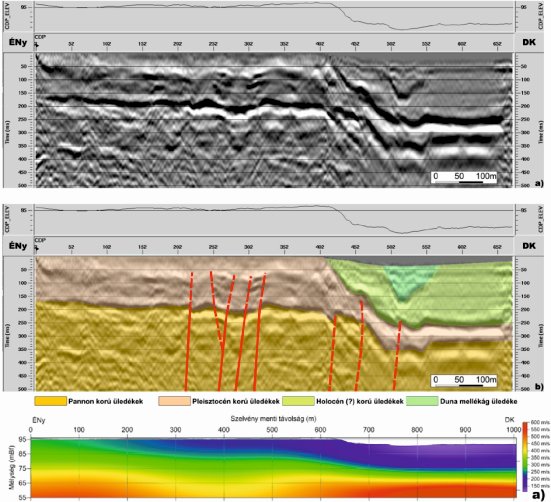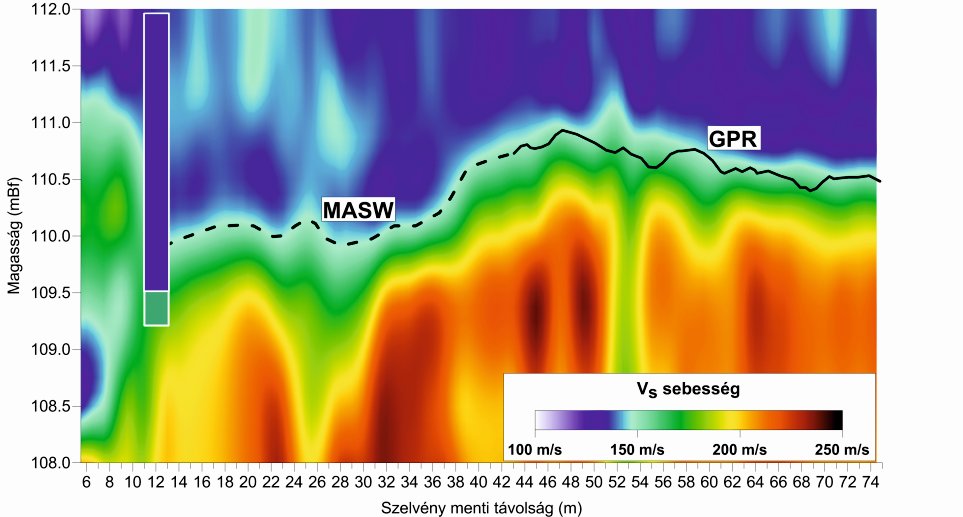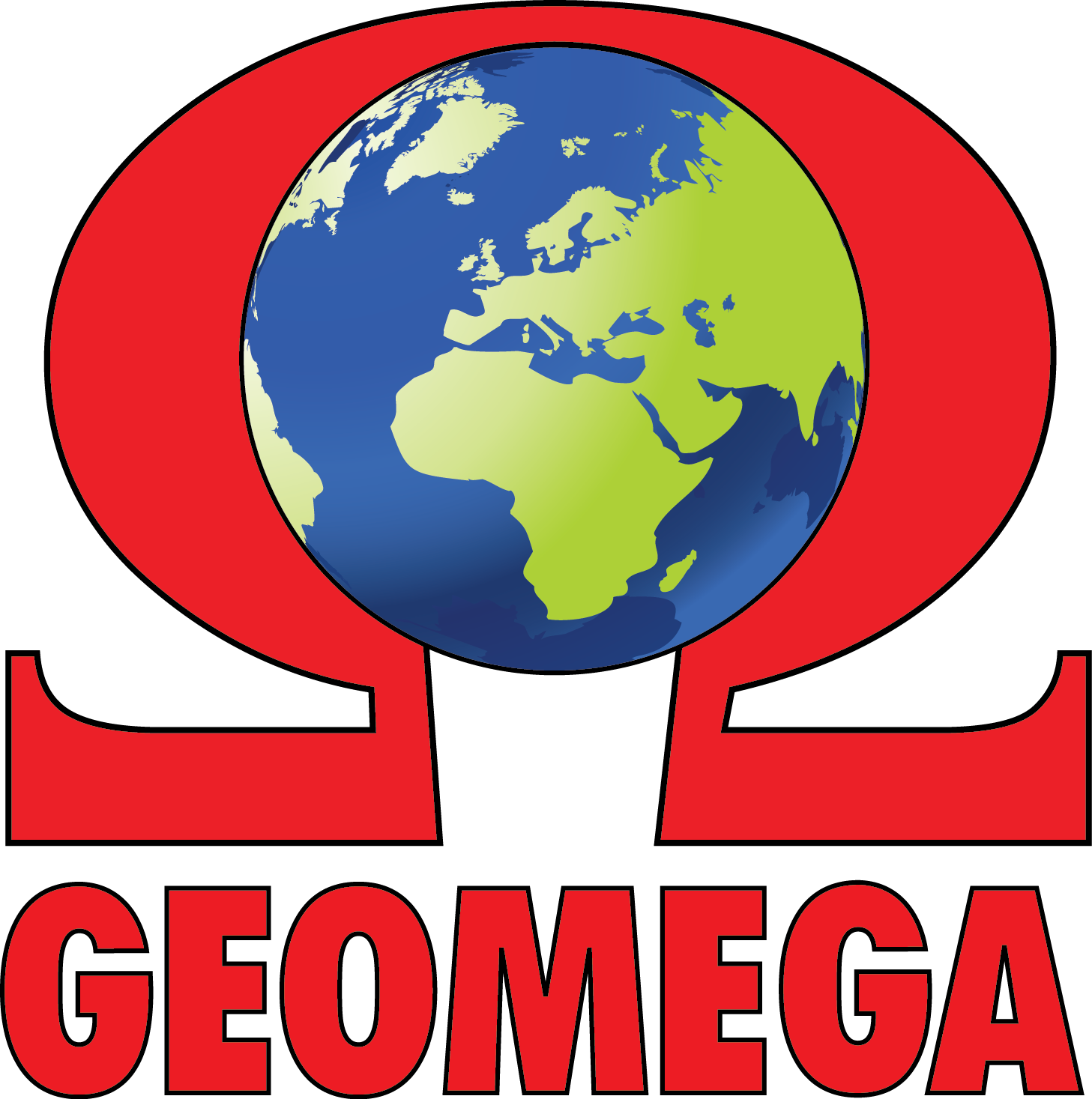Land seismic
During geophysical surveyings using the seismic principle, elastic waves are generated in the soil, and the arrival time and intensity of the waves reflected back from the layer boundaries are recorded. During acquisition small vibration sensing devices (geophones) are deployed along the section to be surveyed, up to many hundreds of pieces (so called spread). The total length of the spread depends on the depth of investigation and can reach several kilometers.
The method of seismic wave generation for deep exploration is either blasting in shallow boreholes or using multi-ton wave generators (so called vibrators), while for shallow geological or engineering geophysical investigations we use heavy hammer hits or a small vibrator carriage as the source of the elastic waves. Our electromechanical vibrator car being unique in Hungary can generate both compressional (P wave) and shear waves (S wave).
Beyond classic seismic exploration based on reflected compressional waves, we regularly carry out investigations using shear wave tomographical, shear- and converted wave reflection and surface wave (MASW) inversion methods. One of the results of the sophisticated data processing is seismic reflection profiles, which are used to determine the depth and subsurface position of geological layer boundaries and other reflecting objects. In case of tomographic or surface wave evaluations, we are not only able to identify and delineate the various formations having different mechanical parameters, but we can also quantify these parameters (P and S wave velocity, Young modulus). This makes this methods extremely useful in engineering geological and soil mechanical surveys, since we can provide non-destructive, in-situ information on the mechanical properties of the subsurface.
Due to the frequent geophone deployments, relocations and wave generation this method is the most time consuming of all surface geophysical methods. However, using our wireless data recording system we can conduct seismic measurements effectively also in remote, hard to access locations. Using our proprietary LandStreamer technology being unique in Hungary, we can further increase the efficiency of the acquisition (3x more efficient compared to classic reflection acquisition), because in this case the whole spread is towed behind the vibrator car making the relocation very effective.
The depth of investigation depends on the actual goal, the complexity of the subsurface geology and the type and power of wave generation. For engineering geophysical, flood protection and groundwater exploration a few 100 meters depth of investigation can be considered, while for deep subsurface exploration, using proper parameterization, the depth from which useful information can be obtained is 2-4 km. The deep-reflection seismic exploration method is used in geothermal, hydrocarbon and other subsurface geological explorations.



